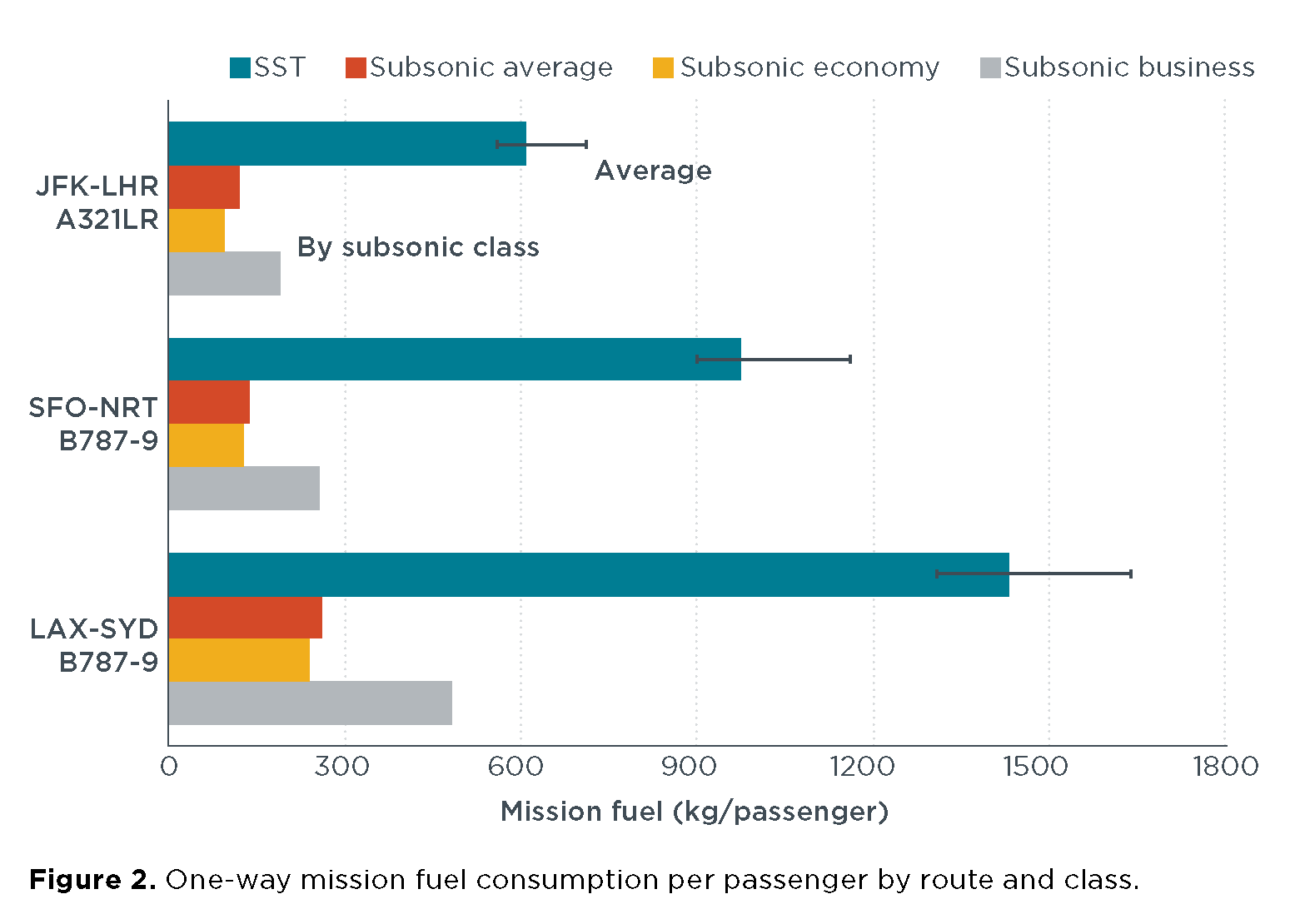International Civil Aviation Organization CO2 standard for new aircraft
Working Paper
Environmental performance of emerging supersonic transport aircraft
This paper provides a preliminary assessment of the environmental performance of new commercial supersonic transport aircraft (SST). Three U.S.-based startup companies are working to develop new SSTs for planned entry into service in the mid-2020s. There are currently no international environmental standards for such aircraft, which last flew in 2003. Policymakers are considering whether to develop new specific SST standards or to apply existing standards for subsonic aircraft to the new designs.
Results from a modeling analysis suggest that these aircraft are unlikely to comply with existing standards for subsonic aircraft. The most likely configuration of a representative SST was estimated to exceed limits for nitrogen oxides and carbon dioxide (CO2) by 40% and 70%, respectively. A noise assessment concludes that emerging SSTs are likely to fail current (2018) and perhaps historical (2006) landing and takeoff noise standards.
On average, the modeled SST was estimated to burn 5 to 7 times as much fuel per passenger as subsonic aircraft on representative routes. Results varied by seating class, configuration, and route. In the best-case scenario, the modeled SST burned 3 times as much fuel per business-class passenger relative to recently certificated subsonic aircraft; in the worst case, it burned 9 times as much fuel compared to an economy-class passenger on a subsonic flight.
These findings suggest two pathways for further development of commercial SSTs. First, manufacturers could maximize the likelihood of meeting existing environmental standards by developing new aircraft based upon advanced, clean sheet engines. Second, policymakers could establish new environmental standards specifically for SSTs based upon the performance of poorer performing derivative engines. Such standards would allow for increased air pollution, noise, and CO2 relative to new commercial aircraft.

